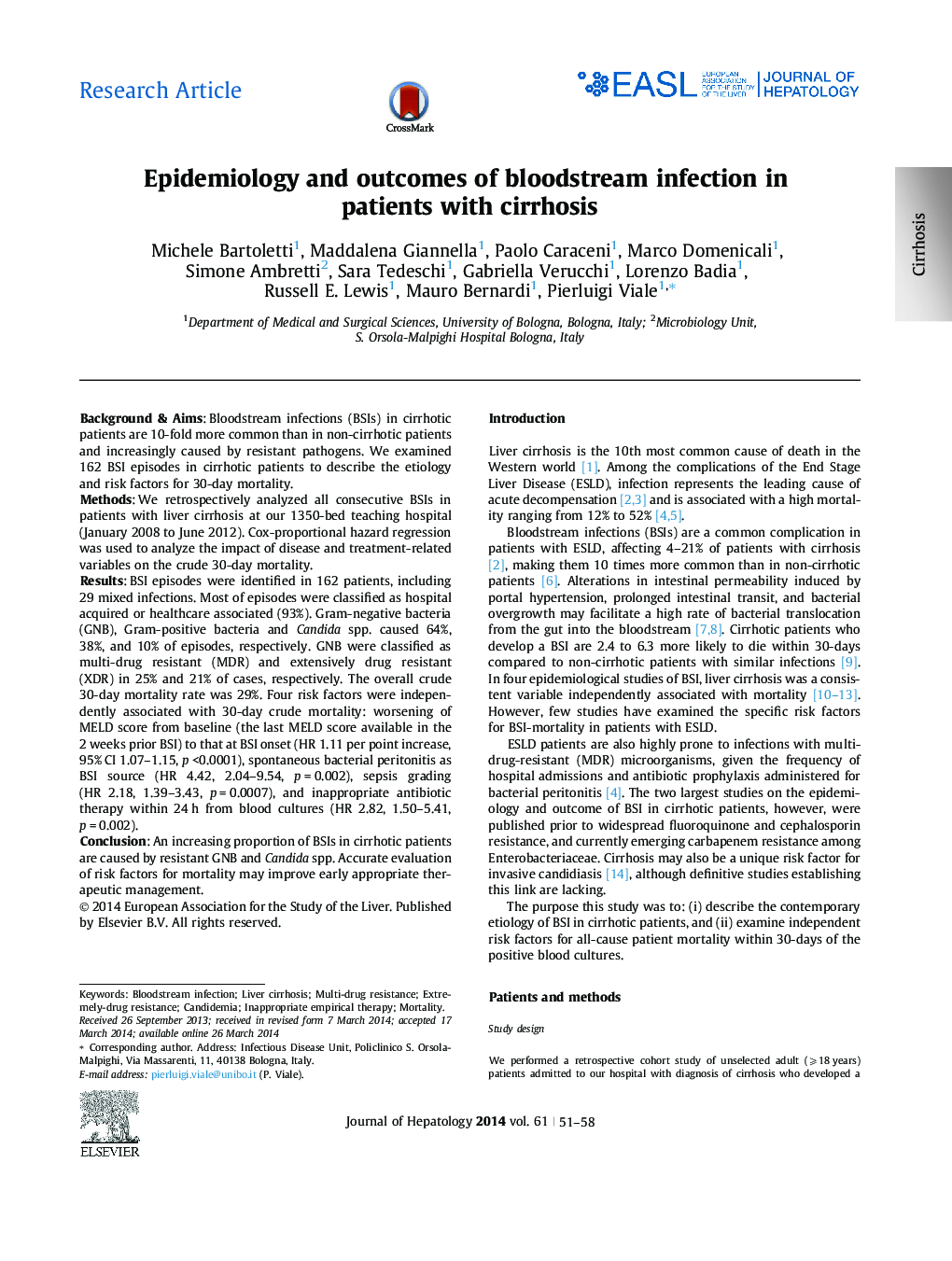| Article ID | Journal | Published Year | Pages | File Type |
|---|---|---|---|---|
| 6103099 | Journal of Hepatology | 2014 | 8 Pages |
Background & AimsBloodstream infections (BSIs) in cirrhotic patients are 10-fold more common than in non-cirrhotic patients and increasingly caused by resistant pathogens. We examined 162 BSI episodes in cirrhotic patients to describe the etiology and risk factors for 30-day mortality.MethodsWe retrospectively analyzed all consecutive BSIs in patients with liver cirrhosis at our 1350-bed teaching hospital (January 2008 to June 2012). Cox-proportional hazard regression was used to analyze the impact of disease and treatment-related variables on the crude 30-day mortality.ResultsBSI episodes were identified in 162 patients, including 29 mixed infections. Most of episodes were classified as hospital acquired or healthcare associated (93%). Gram-negative bacteria (GNB), Gram-positive bacteria and Candida spp. caused 64%, 38%, and 10% of episodes, respectively. GNB were classified as multi-drug resistant (MDR) and extensively drug resistant (XDR) in 25% and 21% of cases, respectively. The overall crude 30-day mortality rate was 29%. Four risk factors were independently associated with 30-day crude mortality: worsening of MELD score from baseline (the last MELD score available in the 2 weeks prior BSI) to that at BSI onset (HR 1.11 per point increase, 95% CI 1.07-1.15, p <0.0001), spontaneous bacterial peritonitis as BSI source (HR 4.42, 2.04-9.54, p = 0.002), sepsis grading (HR 2.18, 1.39-3.43, p = 0.0007), and inappropriate antibiotic therapy within 24 h from blood cultures (HR 2.82, 1.50-5.41, p = 0.002).ConclusionAn increasing proportion of BSIs in cirrhotic patients are caused by resistant GNB and Candida spp. Accurate evaluation of risk factors for mortality may improve early appropriate therapeutic management.
